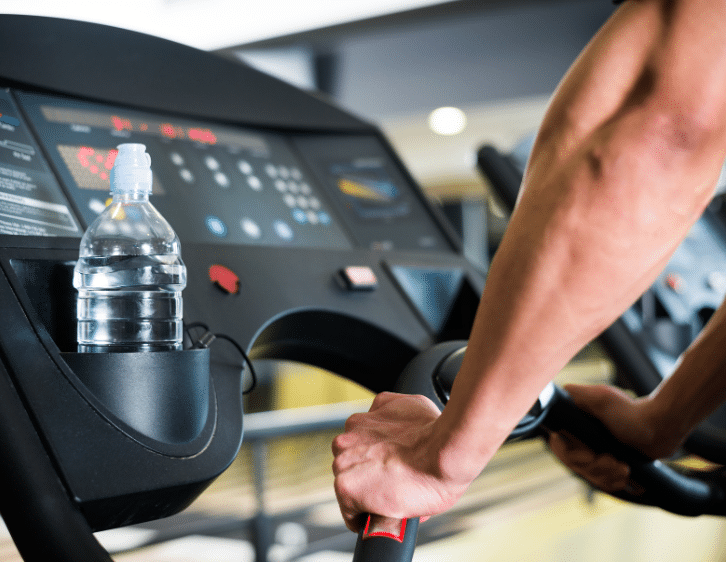How Treadmill Training Benefits Physical Therapy
This entry was posted on September 29, 2023.

Treadmill training is increasingly becoming a cornerstone in physical therapy, thanks to its versatility and effectiveness. Whether it’s a simple treadmill walking program or a more advanced body weight-supported treadmill training session, treadmills cater to various rehabilitation needs with remarkable results.
Fitness Expo believes that the growing popularity of this approach underscores the significant benefits it brings to patients, from improved gait to enhanced motor skills.
As we delve deeper into the subject, let’s explore how treadmill training is revolutionizing physical therapy.
Enhanced Cardiovascular Rehabilitation
Treadmill training is a game changer in physical therapy, especially for cardiovascular health. It’s like a secret weapon against heart-related issues.
Heart Health Improvement

- Aids in lowering blood pressure
- Reduces bad cholesterol levels
- Increases good cholesterol levels
Recovery from Cardiovascular Events
Now imagine you’ve had an adverse event related to your heart. You’re eligible for physical therapy, but how can treadmill training help? Well, it plays a crucial role in rehabilitation after cardiovascular events.
- It helps restore normal heart function
- Speeds up the recovery process
- Reduces chances of recurring episodes
Endurance and Stamina Building
Ever heard the phrase “slow and steady wins the race”? That’s exactly what treadmill training does for your endurance and stamina over time.
It starts slow but gradually increases intensity as your body adapts to the exercise. This helps build stamina and endurance – both vital components of cardiovascular health.
Consistent and Controlled Environment for Recovery
Treadmill training offers a consistent and controlled environment, making it a powerful tool in physical therapy. The benefits are numerous, from setting precise speeds to eliminating weather disruptions.
Precise Speed and Incline Parameters

- Patients can start slowly and gradually increase their pace.
- Therapists can tweak incline levels to simulate different terrains.
Indoor Setting Advantage
With treadmills like the Spirit Fitness XT485ENT and others, you don’t have to worry about weather disruptions. It’s all sunshine indoors!
- No more missed sessions due to bad weather.
- Consistent conditions facilitate a systematic review of progress.
Research conducted in long-term care facilities revealed that indoor treadmill training led to greater functional independence among patients.
Monitoring Workout Intensity
The ability to monitor workout intensity is another major advantage of treadmill training. Data from various studies indicates that thiscontrol over exercise parameters leads to better outcomes in physical therapy programs.
- Treadmills come with built-in monitors for tracking progress.
- Therapists can adjust the program based on real-time data.
Strengthening Muscles and Improving Joint Mobility
Treadmill training can be a real game-changer for strengthening muscles, especially the ones in your lower body. It’s like having a gym session just for your legs.
For instance, when you walk or run on a treadmill, your knee straightens and bends repeatedly. This exercise works out your leg muscles big time.
Enhancing Balance and Coordination
Treadmill training is a powerful tool for physical therapy. It helps improve balance skills and enhances neuromuscular coordination.
Treadmill Training: A Balance Booster
Treadmill training isn’t just about burning calories. It’s also a great way to improve postural balance.
You see, when you’re walking on a treadmill, your body has to adjust to the movement of the belt. This helps strengthen your balance. For example, Parkinson’s disease patients often show improved balance after treadmill training.
Neuromuscular Coordination Enhancement
Next up is neuromuscular coordination. That’s a fancy way of saying how well your nervous system and muscles work together.
When you’re on the treadmill, every step you take involves complex interactions between your brain, nerves, and muscles. Over time, this can help improve coordination.
Vital for Elderly Patients or Those with Neurodegenerative Diseases
Treadmill training is especially important for the elderly or those with neurodegenerative diseases like Parkinson’s. These guys often struggle with balance impairment and walking performance due to their conditions.
Regular treadmill workouts can help them regain confidence in their walking abilities. In one study, participants who used treadmills showed better body weight support and heel-to-toe movement than those who didn’t.
Treadmill training doesn’t just keep you fit; it also improves your balance and coordination skills, which are crucial for those battling age or disease-related mobility issues.
Enhancing the Effectiveness of Physical Therapy
Treadmill training has surfaced as a powerful tool in physical therapy, offering a myriad of benefits.
Its ability to enhance cardiovascular rehabilitation, provide a consistent and controlled environment for recovery, improve gait analysis and correction, strengthen muscles, improve joint mobility, and enhance balance and coordination makes it an invaluable resource in the therapeutic realm.
For patients seeking effective ways to regain their strength or recover from injuries, incorporating treadmill training into their physical therapy routine could be an optimal choice. It’s time to leverage this dynamic modality that not only aids recovery but also empowers individuals with improved overall health.
Embark on your journey to improved recovery with Fitness Expo. Connect with us to explore our range of residential treadmills.
Contact us today for more details!
FAQ
-
Does treadmill training fit all types of physical therapy?
No single approach fits all. However, treadmill training proves beneficial for many conditions, including cardiovascular issues, muscle weakness, balance problems, and gait abnormalities.
-
How does treadmill training help with gait correction?
Treadmill training provides a controlled environment where therapists can closely monitor patient’s walking patterns and make necessary corrections.
-
Can I use any type of treadmill for physical therapy?
While regular treadmills can be used for basic exercises, there are special therapeutic treadmills designed with features like handrails and variable speed settings that are more suited for physical therapy purposes.
-
Is treadmill training safe for older adults undergoing physical therapy?
Yes, under professional supervision, treadmill training is safe for older adults as it helps improve balance and coordination while strengthening muscles.
-
How often should one undergo treadmill training during physical therapy?
The frequency depends on individual needs and therapist recommendations but generally ranges from 2-3 times per week.
-
What other equipment can complement treadmill training in physical therapy?
Other equipment, like resistance bands or stability balls, can complement treadmill training, providing a comprehensive workout.



